Although it has only been officially possible to make and sell Prosecco DOC Rosé since 2020, it has a history in the region going back to 1880, with the first mentions of rosé wines with Pinot Nero and it is thought, through research commissioned by the Consorzio, that over half its producers in the Prosecco DOC area were already making some form of rosé long before it was brought under the protection of the Consorzio in 2020.
But as the global demand for rosé has surged over the last 10 to 15 years there has been a growing call and need amongst producers to turn what were trials, experiments and a whole range of locally produced rosé-styles, mostly blending Glera and Pinot Nero grapes together, into a targeted, region-wide focused approach.

The buyers had the chance to assess the potential of Prosecco DOC Rosé in the UK market
“What we needed was clarity,” stresses Neil Phillips, ambassador for Prosecco DOC in the UK, as it was not getting the attention or interest it potentially should, considering the success of classic Prosecco and the level of demand and interest in rosé overall. "We did a lot of trials, with longer and shorter fermentations, and different alcohol levels."
The result was a 60-day second fermentation process, where the grape varieties - which must be Glera (minimum 85%) and Pinot Nero (vinified as red wine which accounts for 10% up to a maxium of 15%) - are fermented separately and then blended together. Producers can then decide how long they might want to keep the wine on lees beyond the 60 day second fermentation -though the vast majority keep to the minimum period.
The role of Pinot Nero is clearly vital in how Prosecco DOC Rosé develops and there are now up to around 1,600/1,700 hectares of the variety planted of which about a 1,000 hectares goes into rosé. The overall rosé category now makes up 9.4% of Prosecco DOC’s total production and whilst its classic styles don’t require any vintage to be on the label, though this is up to the producer, it does for its rosé.
Good timing
Its route into the market has so far been focused and more successful across the retail channels, but Phillips is confident 2025 is the year Prosecco DOC Rosé can come into its own in the on- trade.
“I think it is the best opportunity we have had,” he says. “Which is why we wanted to do a particular showcase on the rosés as we think a lot of people out there could be interested and it’s time for our producers to be recognised more in the rosé arena.”
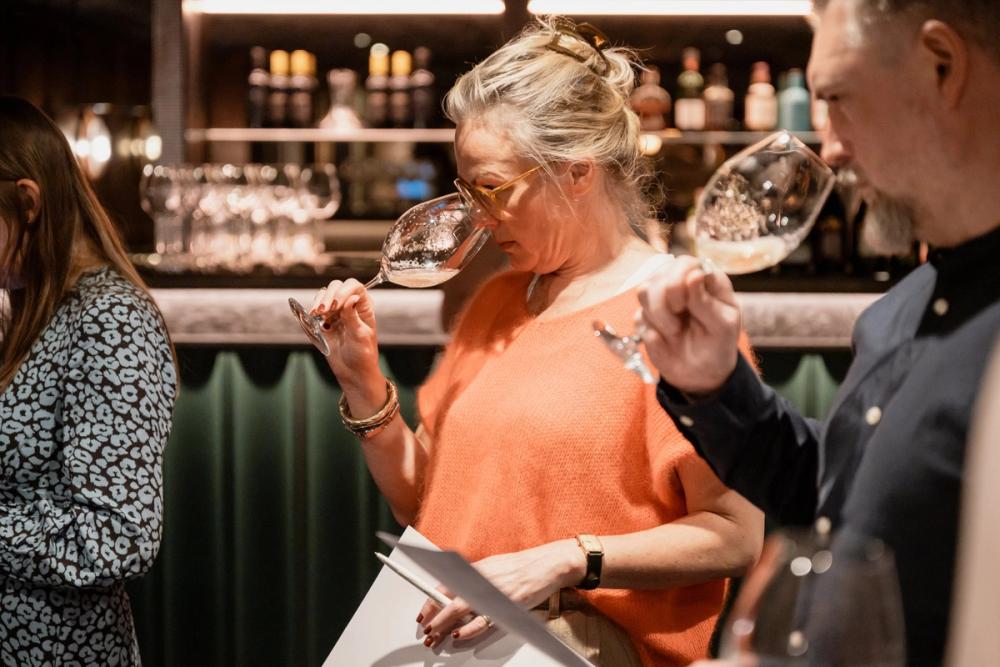
Victoria Sharples assessing the Prosecco DOC Rosé in the open pour tasting
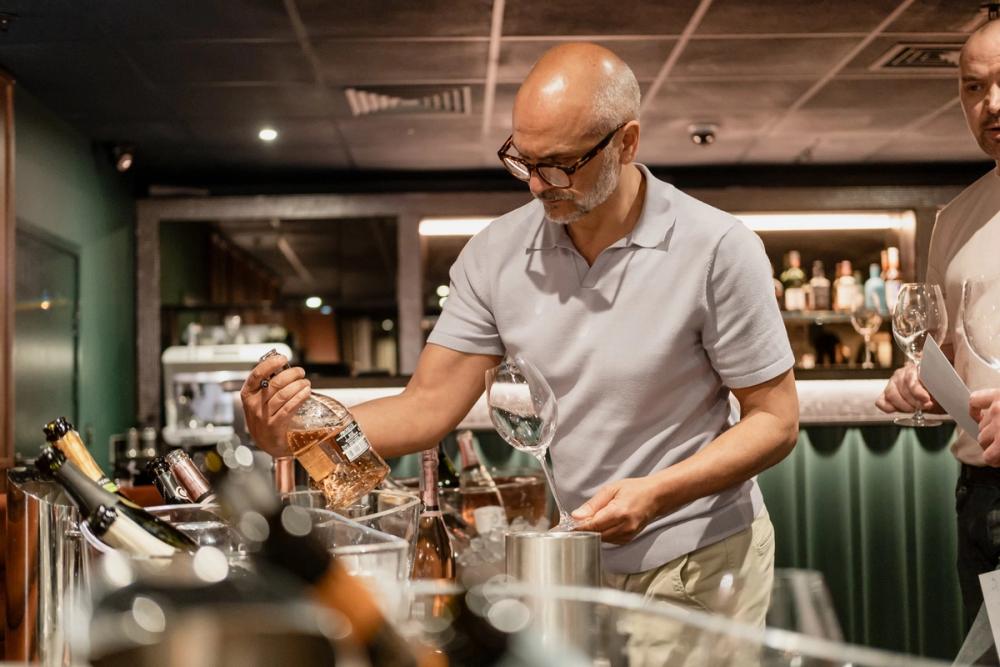
Giles James taking part in the open pour Prosecco DOC Rosé tasting
To help assess the category and what potential and opportunities there are for Prosecco DOC Rosé in the UK, as part of a wider debate looking at Prosecco DOC in general, The Buyer brought together a panel of leading buyers across the premium on and off-trade featuring wine importers, sommeliers and senior on and off-trade buyers. They included:
- Andrew Clark, purchasing manager for wine, Mitchells & Butlers.
- Konstantinos Nestoridis, head sommelier, Midsummer House.
- Giles James, wine buyer, Groucho Club and founder of ID Wines.
- Victoria Sharples, wine consultant and buyer for Aperivino wine bar.
- Phill Morgan, head sommelier, Bocca di Lupo.
- Cat Lomax, wine consultant and former head of wine at Marks & Spencer, Majestic and Waitrose.
- Ashley Fahey, co-owner of Terrace Rooms & Wine, Ventnor, Isle of Wight.
- Benedetta Lengo, group sommelier, Gaucho Group.
- Paul Fleming, head of marketing at Amathus Drinks.
- Cristina Ciutac, sommelier, M Restaurant.
Importers who helped introduce specific wines and take part in the debate:
- Silvia Pampaloni, brand ambassador Italy at Berkmann Wine Cellars.
- Nick Tatham MW, wine development manager, Continental Wine.
- Loris Propedo, wine buyer, Mondial Wines.
Finding its feet

Mitchells & Butlers Andrew Clark says he expects to see more from Prosecco DOC Rosé in the future in the on-trade
But as with all new innovations in wine it may take some time to fully find its feet as both the trade and the consumer fully understand what Prosecco DOC Rosé can offer. Particularly as there are so many different styles to choose from.
Andrew Clark says on paper Prosecco and rosé should work well together as they are both such huge growth categories in the on-trade. But it’s yet to see the pick up in volumes he had hoped for at Mitchells & Butlers in its more commercial outlets, but is “starting to look like it could become a thing” in its more premium venues.
That said it has had a generic sparkling Italian rosé on its list for some time that has performed well, so time will tell.
“It’s a bit of a blank canvas here and there are a number of different styles to choose from. But how do you move people to something they are not used to?” he asks, whilst stressing as a group it does have faith in Prosecco DOC Rosé and is “persevering with it”.
Phil Morgan says he was surprised to see Prosecco DOC Rosé not do as well as he expected when he listed it at Bocco di Lupo. “Prosecco’s great and everyone buys it. Pink’s great and everyone buys it. Pink Prosecco? It was more two plus two equals three,” he says.
But the scale and popularity of Prosecco and rosé means that given time surely it must work, stresses Clark.
The rosé category is close to the heart of Ashley Fahey and the 65 plus rosés that she has on the list at the Terrace Rooms & Wine in the Isle of Wight. A range that saw it win the Rosé Wine List of the Year at the Star Wine List of the Year UK with The Buyer 2025 awards.
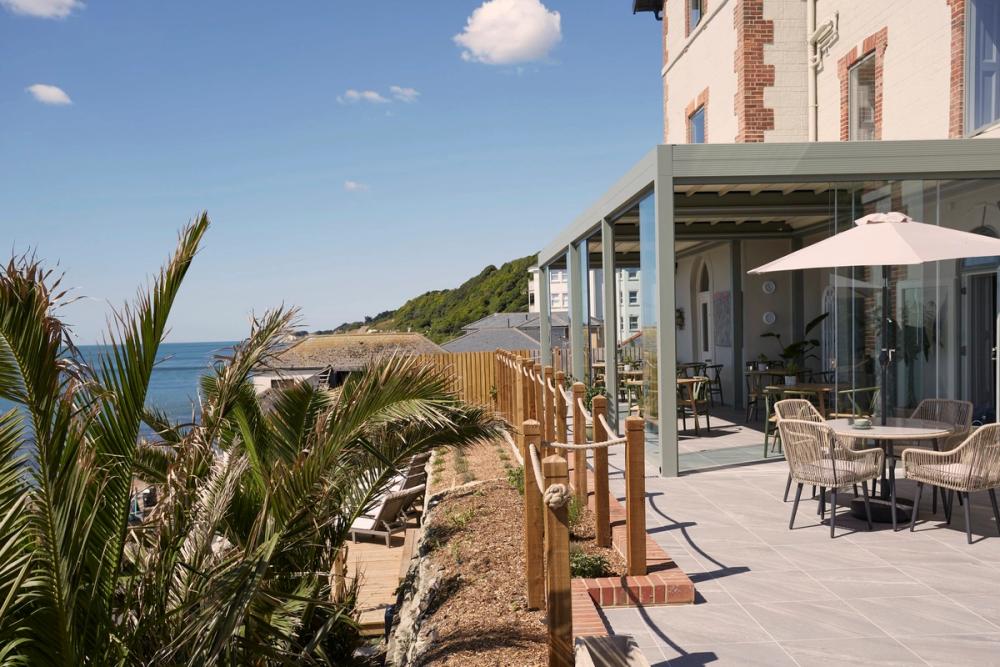
The Terrace at Ventnor on the Isle of Wight has an award-winning rosé wine list
“The rosé styles were a real surprise,” she says. “I wasn’t expecting the level of balance and elegance in many of the rosés we tasted. I can imagine for the restaurant, rosé Prosecco is instantly appealing, we sell a rosé frizzante which is a huge hit for brunches and early and light lunches so the same should happen for Prosecco DOC Rosé.”
She believes there is a “perception of sweetness” issue to overcome with the consumer in the on-trade that might think Prosecco DOC Rosé means it is sweet. When they are so used to drinking and enjoying dry rosés.
“The first word that people mention to us about rosé is that it must be dry,” she adds.
She sees the best selling price for Prosecco DOC Rosé to be around £30 to £45 in the on-trade.
Off-trade boom

Cat Lomax says Marks & Spencer had great success with Prosecco DOC Rosé when it was one of the first retailer to introduce it to the UK
Cat Lomax sees this as more of a channel specific issue. She recalls the time when she was buying wine at Marks & Spencer and was responsible for helping to launch Prosecco DOC Rosé into the UK in 2020. She says "it went like a train” and crucially it did not “cannibalise” sales of regular Prosecco at the same time.
“It was a separate occasion and a separate purchase and had different considerations to a Prosecco Brut and it was nearly 100% incremental sales which was astonishing and added a huge amount of value to that business. So I think there is a channel element here in terms of what people are thinking in a supermarket versus when they are in a restaurant or a pub.”
She adds: “I think Prosecco DOC Rosé is most appealing when it is youthful and fruit forward so I would encourage careful management of vintages in the UK market.”
Phillips says that also mirrors what the Consorzio has seen with strong sales in the off-trade, but it is now confident it can get the same sort of momentum in bars and restaurants in the coming years.
"There was a lot of anticipation, but things do take longer in the on-trade,” he adds, pointing to the success Prosecco DOC Rosé has had in other markets like the US.
There is also the food element to the Prosecco DOC Rosé and the option that opens up to operators in the on-trade, he says.

Amathus' Paul Fleming says it is interesting to see how Prosecco DOC Rosé has found its feet first in the off-trade rather than the on-trade
It seems the market is acting differently than usual, says Amathus’ Paul Fleming, in that brands and trends usually find their feet in the on-trade and then move over to retail.
“It’s very rarely created in multiple retail as a category and then transitioning into on-trade,” he says.
Perhaps the issue is there is not one big brand within Prosecco that really stands out in order to drive a new category forward, he adds.
Giles James says he was looking forward to seeing what the rosé wines would offer and found “in general” they “were quite acceptable”. He says: “There was some variance as you would hope and expect, but they generally trod a line of lightness and delicacy with noticeable light, sweet red fruit flavours that helped mask the residual sugars.”
Chance to taste
Together the panel had the opportunity to taste a selection of rosés chosen to best illustrate the different styles of rosé being made in the Prosecco DOC region. They included:
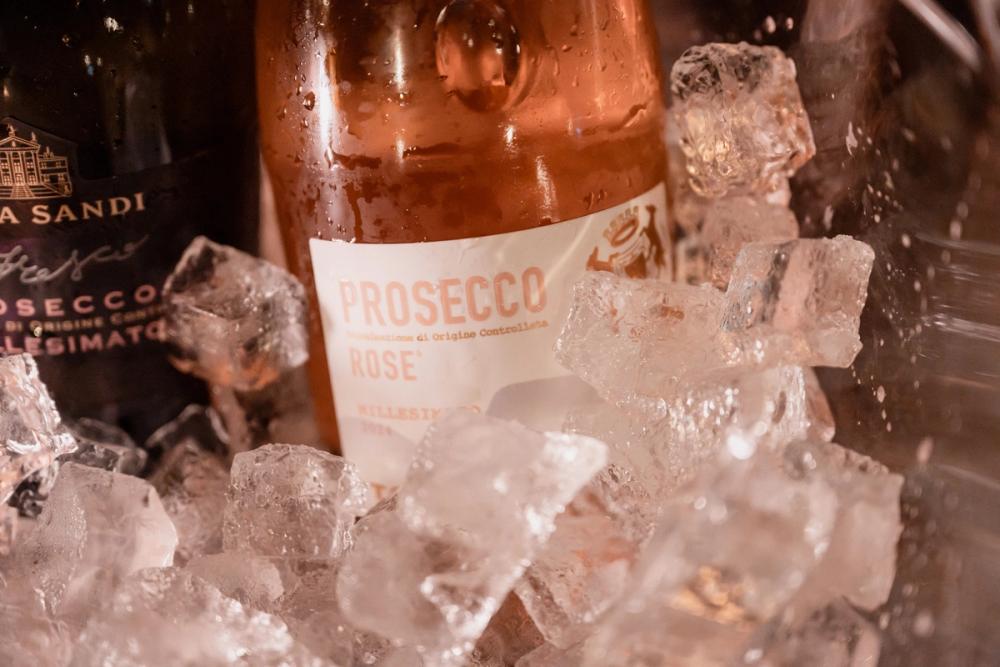
Antonio Facchin & Figli, Prosecco DOC Rosé Treviso Millesimato 2024 Extra Brut.
Residual sugar (g/l) 5.5; 11.5% ABV; 87% Glera; 13% Pinot Noir, Treviso, Veneto.
Importer: Hay Hampers.
Col De Mar, Prosecco DOC Rosé Millesimato 2023 Brut.
Residual sugar (g/l) 8-9; 11.5% ABV; 90% Glera, 10% Pinot Noir. Venice, Veneto.
Importer: Mondial Wine Ltd.
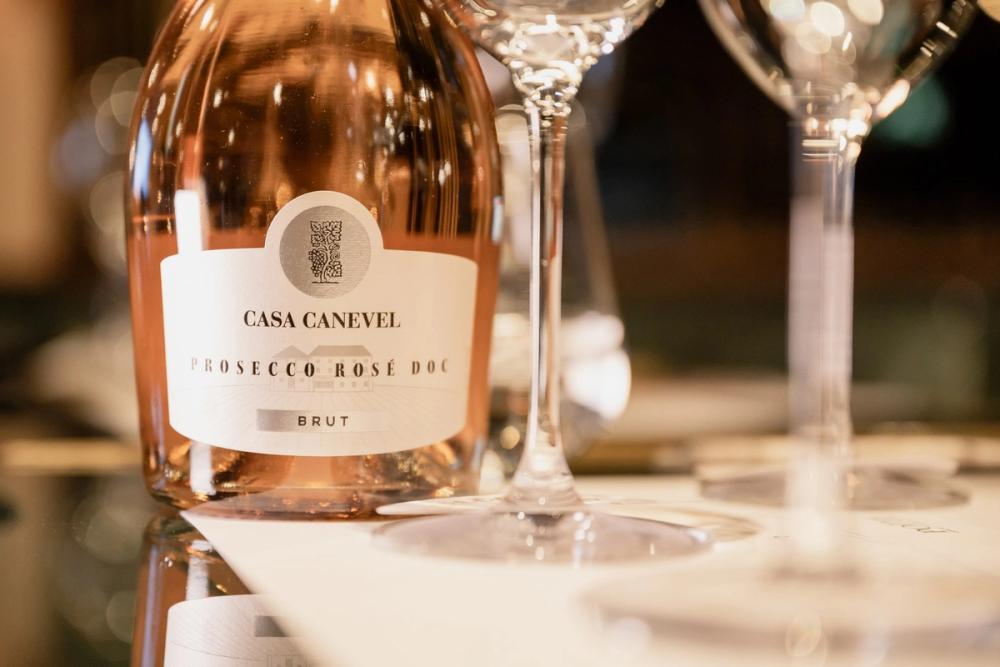
Canevel, Prosecco DOC Rosé Millesimato 2023 Brut.
Residual sugar (g/l) 10; 11% ABV; 85% Glera, 15% Pinot Noir. Treviso, Veneto.
Importer: Berkmann Wine.
Perlino Prosecco DOC Rosé Millesimato 2023 Extra Dry.
Residual sugar (g/l) 15; 11% ABV; 90% Glera, 10% Pinot Noir. Treviso, Veneto.
Importer: Continental Wines.
Viticoltori Ponte Prosecco DOC Rosé Millesimato 2023 Brut.
Residual sugar (g/l) 11-13; 11% ABV; 85% Glera 15% Pinot Noir. Treviso, Veneto.
Importer: Presidente Wines.
Villa degli Olmi Prosecco DOC Rosé Millesimato 2024 Extra Dry “Corte dei Rovi”.
Residual sugar (g/l) 13; 11% ABV; 85% Glera 15% Pinot Noir. Vicenza, Veneto.
Importer: Temple Wines, Cash & Carry.
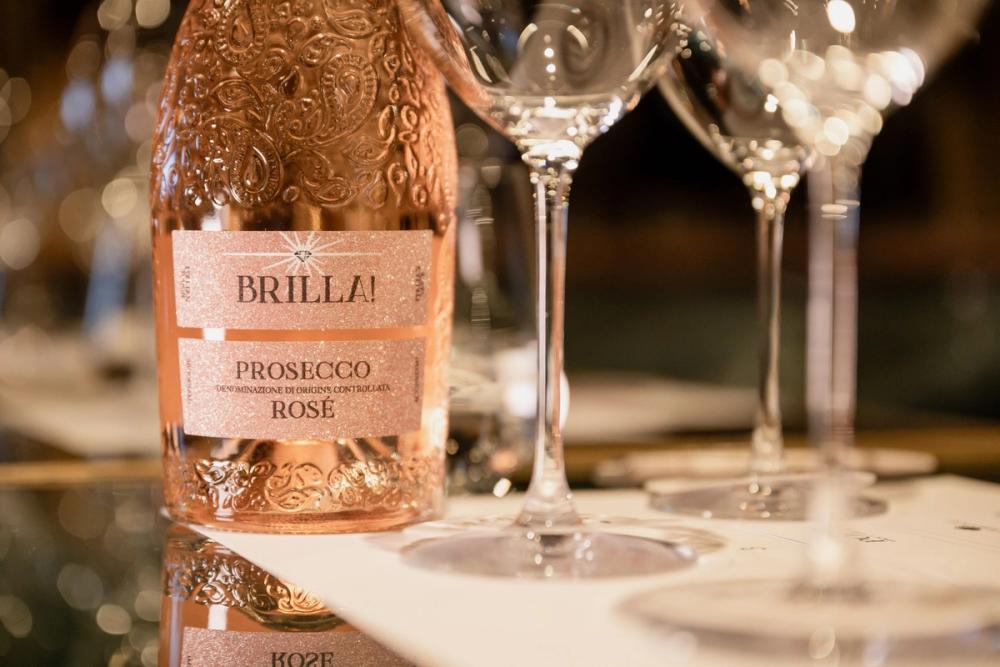
Brilla! Prosecco DOC Rosé Millesimato 2024 Extra Dry.
Residual sugar (g/l) 14; 11% ABV. 85% Glera, 15% Pinot Noir. Venice, Veneto.
Importer: William Morton Limited.
Maschio dei Cavalieri Prosecco DOC Rosé Millesimato 2024 Extra Dry.
Residual sugar (g/l) 12; 11% ABV; 85% Glera 15% Pinot Noir. Treviso, Veneto.
Impoter: Tennent Caledonian Breweries.
Villa Sandi Prosecco DOC Rosé Millesimato 2023 Brut "Il Fresco”.
Residual sugar (g/l) 12; 11% ABV; 85% Glera 15% Pinot Noir. Treviso, Veneto.
Importer: Annessa Imports.
Tosti 1820 Prosecco DOC Rosé Millesimato 2024 Extra Dry.
Residual sugar (g/l) 12; 11% ABV; 85% Glera 15% Pinot Noir. Treviso, Veneto.
Importer:Bidfood.
Phillips says the first thing to say is that there is a noticeable trend amongst producers to follow the pale pink “Provence style colour” and out of four tasted, three were pale in colour. "This has developed since our first Millesimato where the percentage of paler styles would have been less,” he says.
Fahey was drawn to the more fruit driven, “wine drinking” rosé from Col de Mar which, she says,has enough acidity to work nicely with the fruit. Being by the sea she always looks for wine quality rosés that people can sit on the terrace and enjoy.“We can probably easily sell that without trying,” she says.
“The Canevel rosé is really different,” says Morgan at Bocco di Lupo. “It’s a different expression and has got a lot of depth to it.”
Food pairing
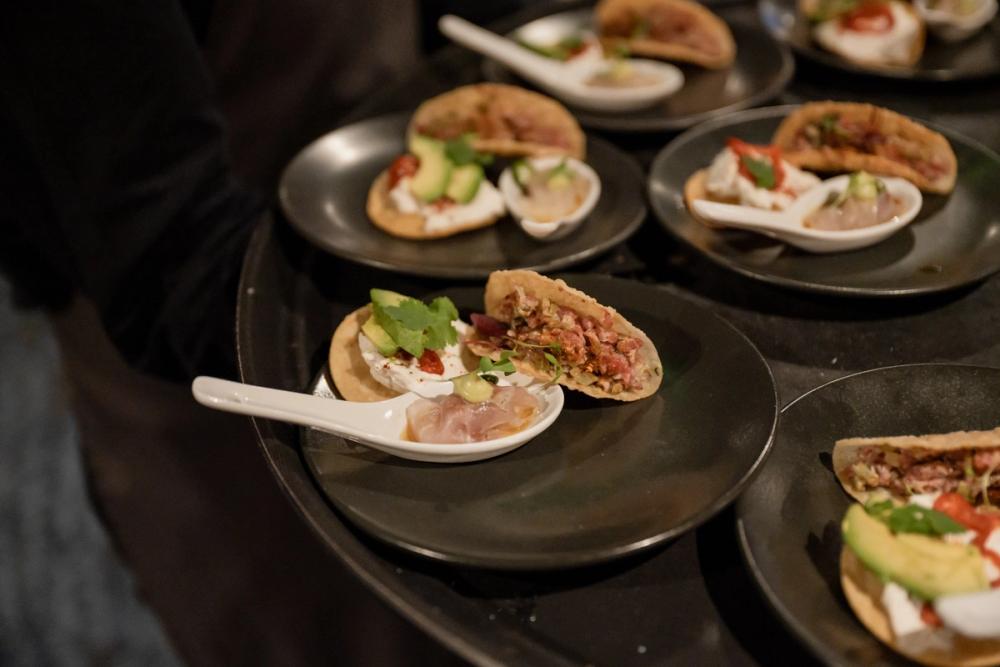
The buyers had the chance to taste the Prosecco DOC Rosés with a selection of dishes from Gaucho to see how well they go with food
The debate was also an opportunity to see how the rosés performed against food. The panel were able to taste the wines against a selection of Gaucho dishes including:
- Sea Bass Ceviche with aji amarillo, ponzu dressing, lime & pickled jalapeño.
- Beef Tacos with aji amarillo, cornichons, shallots, parsley & lime.
- Superstraccia Tostado with fresh avocado, piquillo peppers & coriander.
Lomax says it was good to see such a diverse range of styles across the four wines and how some “found their feet” with the food being served, particularly the first “steely” wine from Antonio Facchin & Figli.
Victoria Sharples agrees and says she particularly liked the “bitter, dryness” of the Antonio Facchin & Figli which she sees as “more of a food wine”.
“As a category a drier Prosecco DOC Rosé piques my interest,” she adds.
Konstantinos Nestoridis agrees and says that the future for Prosecco DOC Rosé in the premium on-trade has to be for its drier styles that not only best amplify the quality of the wines to be drunk on their own, but that really come to life when paired with food when the different flavour and fruit characteristics can really come to the fore.
Overall the buyers were impressed by the wide selection of rosés in the tasting and can certainly see why there is such potential for them not only in the off-trade, but now in the on-trade too, particularly in more premium outlets where there is more chance to hand sell and introduce the wines to guests.
- To find out more about Prosecco DOC Rosé go to the Consorzio de Tutela de Prosecco website here.
- You can follow on social media:
- Instagram on @proseccodoc and @proseccodoc_uk.
- You can read the first report from The Buyer Prosecco DOC debate on why it is a necessity in the premium wine market by clicking here - and the second report on what Prosecco DOC needs to do next by clicking here.
- Thanks to Gaucho in the City for hosting the event.
- Neil Phillips will be hosting Prosecco DOC & Grana Padano PDO tastings with chef, Danilo Cortellini, presenting cooking shows at Taste of London June 18-22 at the ‘’Cheers and Cheese to EU’’ stand number S28 at the event.
- Prosecco DOC celebrations will continue this summer with National Prosecco Week launching on August 10th and Neil Phillips will be hosting Prosecco DOC tastings at Waitrose Wine Bar in Kings Cross with final details to follow on Instagram at @proseccodoc_uk.

































